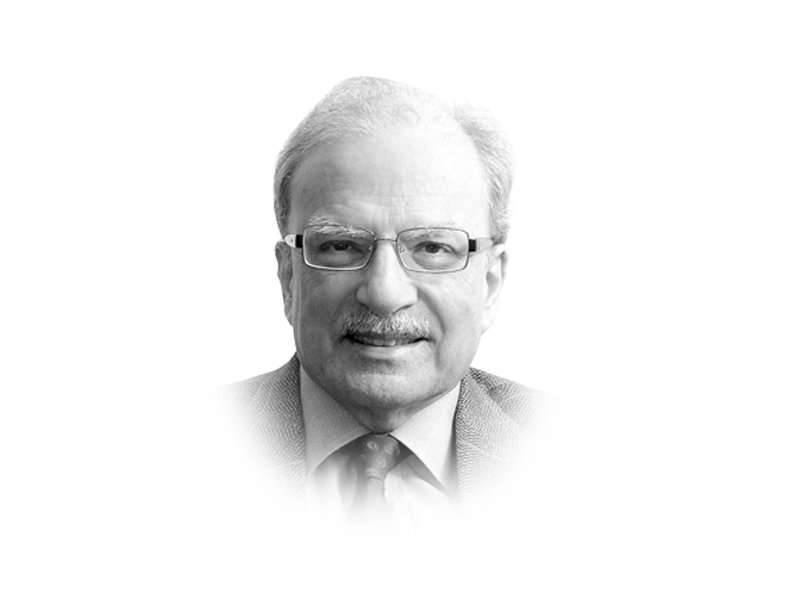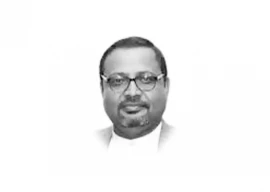
The first was the arrival of eight million Muslim refugees from India of which three million were from the Urdu-speaking communities in India’s Muslim-minority provinces. Most of them went to Karachi for the simple reason that Muhammad Ali Jinnah, Pakistan’s founding father, chose that city to be Pakistan’s capital. Karachi was his place of birth. Had some other city been chosen to house the government, that’s where the refugees would have gone since they were hoping to find jobs in the state sector. This is one of the several “What If..?” questions about Pakistan’s history.
The remaining five million refugees were from Punjab and they settled in the part of the province that was now in Pakistan. The out-migration of Hindus and Sikhs created opportunities for the incoming migrant population. The Urdu-speaking migrants who went and settled in Karachi changed for good the ethnic composition of Sindh and launched social and political movements whose effects are being felt to this day.
The second large-scale movement of people that impacted Pakistan’s development was from the rural to the urban areas. This brought workers from the barani areas in north Punjab and Khyber-Pakhtunkhwa to Karachi that was being built at a feverish pace to accommodate the new government as well as the new industrial, commercial and financial enterprises. Karachi’s native Sindhi population, the refugees and the workers from the country’s north did not mix socially. They established their own communities. This ethnic separation could have been avoided had a political organisation provided the means for bringing together these socially diverse people.
To Karachi’s ethnic diversity were added the Pakhtun refugees who fled Afghanistan when the Soviet Union invaded their country. There was an attempt to house the displaced people in a string of refugee camps built by the government in association with the United Nations’ High Commission for Refugees. That effort notwithstanding, tens of thousands of Afghans slipped into the country’s major cities, in particular Karachi and Islamabad. They became important components of the economies of these urban places but were not politically and socially integrated.
The fourth migration was not into Pakistan or within the country but took place out of Pakistan. For 30 years after the end of the Second World War there was a steady flow of Pakistani workers to Britain. Because of the large losses of young men in the war, Britain did not have enough people of its own to work for the industries that were being revived. The South Asians arrived to fill the gap, with a fairly large flow from Pakistan. The next wave of migrant workers from Pakistan went to the Middle East beginning in the mid-70s when a sharp increase in the price of oil brought windfall gains to the oil- exporting countries of the area. This migration has continued since the permits to work issued by the oil-surplus countries of the area allowed people to labour for only a limited number of years after which they had to return to their homes. As a group of sociologists have discussed in their book, Building a Nation with Non-nationals, this way of building a nation is not a viable proposition.
The workers in the Middle East contributed to Pakistan’s social and economic development by sending back to their families most of their earnings. This helped the capital-short Pakistani economy. But it also brought about significant social change. No firm estimates are available but using the back of the envelop calculations, I believe that as much as $250 billion worth of remittances have been sent back to some 10 million labour-exporting households over the last four decades. These flows have added $25,000 to household incomes, helping them to migrate from poverty to the lower middle-class status.
It is my contention that the deep churning in the Pakistani society as result of the large movements of people could not be catered by old politics. The political establishment was represented by two parties — the PPP and the PML-N — that catered to the old demographic mix. Both remained un-modern in that they did not have the foresight to broaden their political and social base. The parties turned to the families of the founding fathers to find new leaders. But dynastic politics could not provide for the fast changing social and economic Pakistan. In a reasonably politically open society Pakistan had become, what was needed was an organisation that was inclusive rather than exclusive. Imran Khan’s PTI became such an organisation. Its slogan of ‘Naya Pakistan’ resonated with the people and won it majorities not only in the national legislature but also in two of the four provincial assemblies, Punjab and Khyber-Pakhtunkhwa. To fully appreciate Imran Khan’s rise we must understand demographic change in the country.
Published in The Express Tribune, September 24th, 2018.
Like Opinion & Editorial on Facebook, follow @ETOpEd on Twitter to receive all updates on all our daily pieces.
-(1)1717678110-0/Kendrick-(1)-(1)1717678110-0-405x300.webp)







1729685382-0/Untitled-design-(57)1729685382-0-270x192.webp)



1735299255-0/sidra--(18)1735299255-0-270x192.webp)

1735296145-0/sidra--(16)1735296145-0-270x192.webp)

1735380262-0/Untitled-design-(75)1735380262-0-270x192.webp)


COMMENTS
Comments are moderated and generally will be posted if they are on-topic and not abusive.
For more information, please see our Comments FAQ